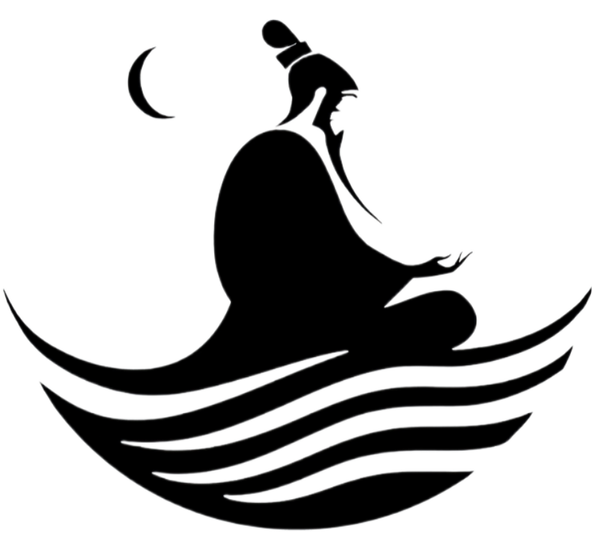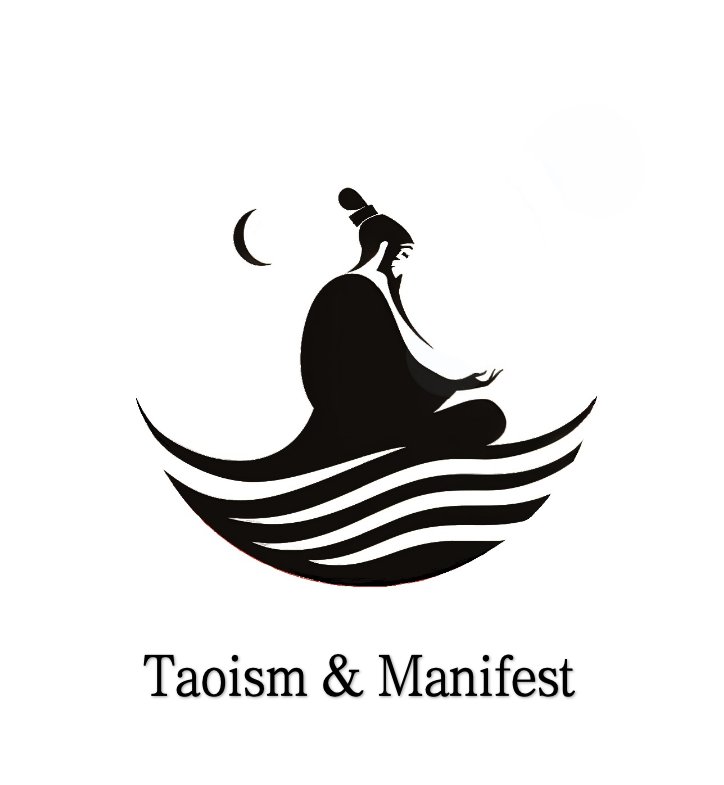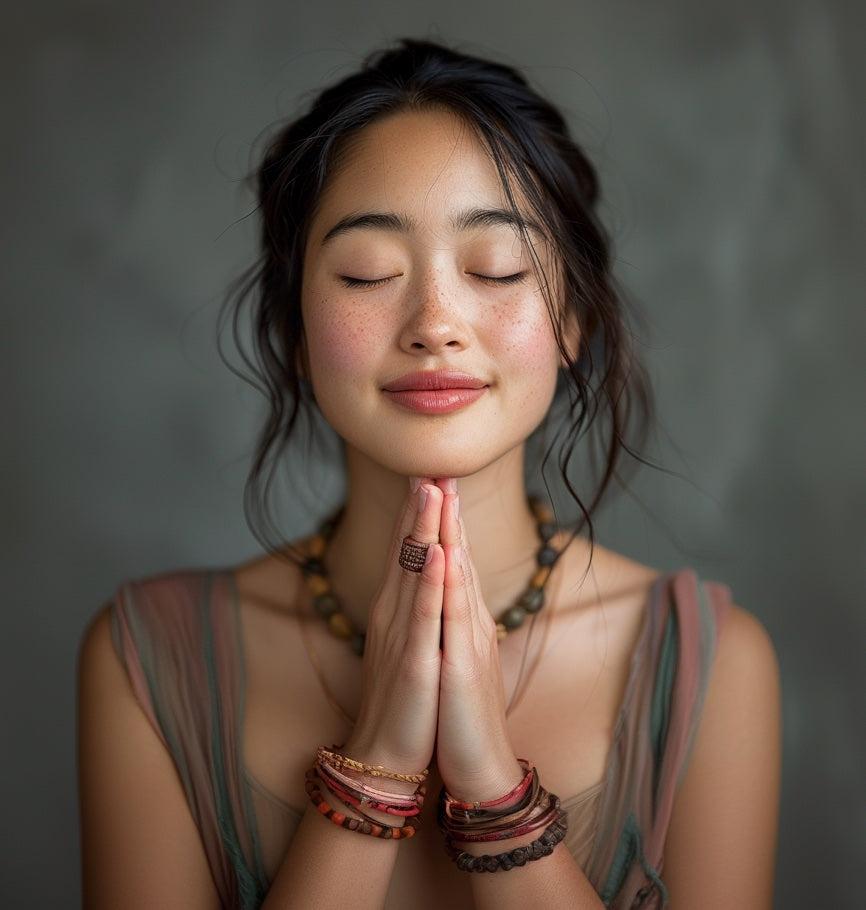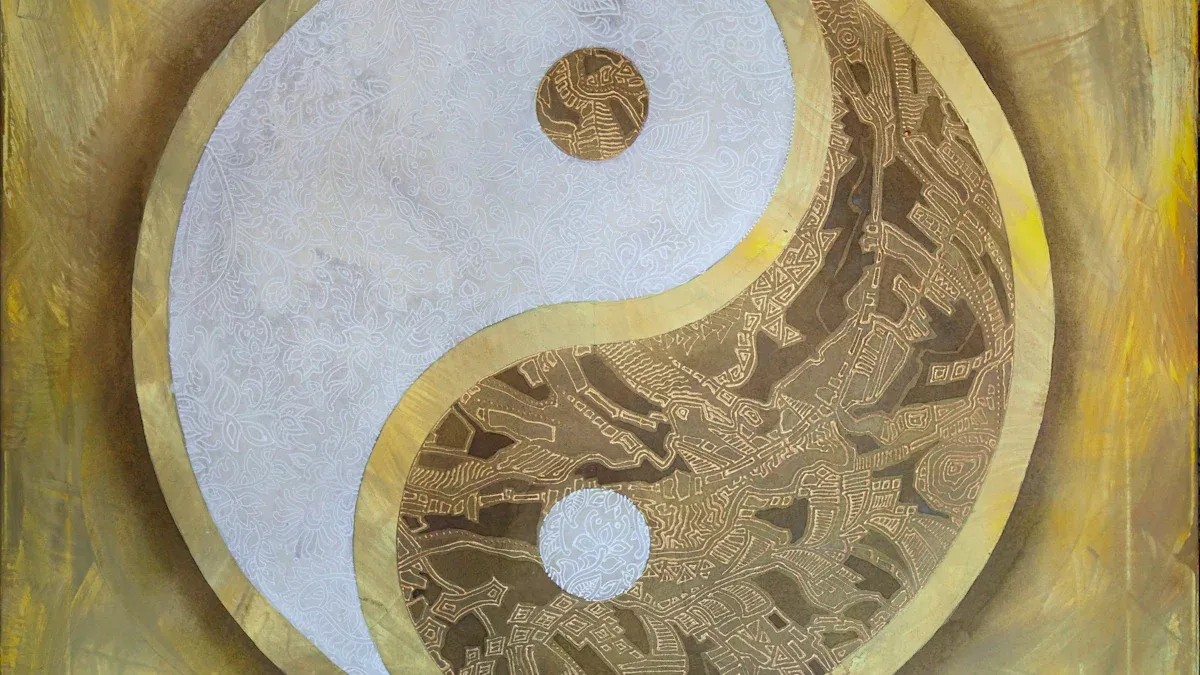
When you look at Tao and Buddhism, you find some things are the same and some are different in daily life. Both help you find peace and kindness, but each has its own way. Buddhism tells you to let go of wanting things and to accept that things change. Taoism tells you to live with nature by accepting things and using Wu Wei. The table below shows how these ideas can change your choices and how you feel each day.
Belief/Practice |
Impact on Daily Life |
|---|---|
Karma |
Helps you do good things |
Not-Self/Anatta |
Makes you feel less upset |
Interconnectedness |
Helps you feel like you belong |
Impermanence |
Helps you accept when things change |
Meditation |
Makes your mind clear and lowers stress |
Mindfulness |
Helps you control your feelings |
Key Takeaways
Taoism and Buddhism both teach peace and kindness, but they use different ways. Taoism teaches people to live with nature. Buddhism teaches people to let go of wants.
Both traditions say meditation is very important. Meditation helps calm your mind. It lowers stress and helps you know yourself better.
It is important to understand impermanence. Buddhism says suffering comes from holding on to things. Taoism says we should accept change.
Both traditions care about compassion and being connected. They want you to think about what you do and how it affects others.
You can use ideas from both Taoism and Buddhism every day. Doing things like mindful breathing and being kind can help you feel better.
Tao and Buddhism Overview
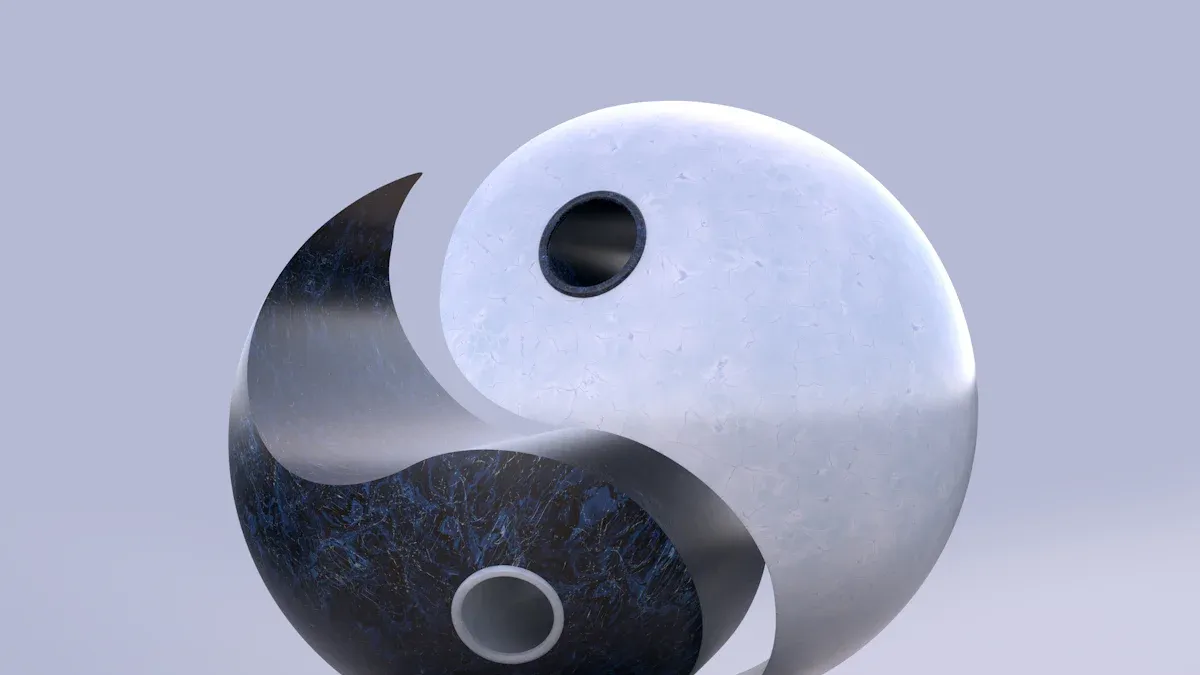
Core Beliefs
When you learn about Taoism and Buddhism, you see they guide you in different ways. Taoism teaches you to follow the Tao. This means living in harmony with nature. You try to balance Yin and Yang. You let things happen with Wu Wei, which means not forcing things. Buddhism asks you to look at your desires. You learn how wanting things can affect your life. Suffering comes from wanting things. You can find peace by letting go of these desires.
Tip: Both Taoism and Buddhism want you to think about your actions and thoughts. This helps you know your place in the world. It also helps you see how you connect with other people.
Taoism teaches that the Tao guides you to live naturally.
Buddhism says rebirth happens because of desire. You can reach Nirvana by ending desire.
These beliefs help you see life as a journey toward balance and understanding.
Here’s a simple comparison of their main beliefs:
Aspect |
Buddhism |
Taoism |
|---|---|---|
Philosophical Focus |
Impermanence, no permanent self, interconnectedness |
Harmony with Tao, Yin and Yang |
Afterlife |
Rebirth, karma, Nirvana |
Immortality or natural life/death |
Practice |
Meditation, ethical conduct |
Aligning with Tao, Wu Wei |
Main Goals
The main goals in Taoism and Buddhism shape how you live each day. Taoism wants you to find harmony with nature. You try to keep balance in your life. You learn to accept change and not force things. Buddhism helps you end suffering by following the Noble Eightfold Path. You practice mindfulness and meditate. You work toward Nirvana, which means freedom from suffering and rebirth.
Taoism rituals help you feel stronger and happier.
Meditation in Buddhism helps you control your feelings and think better.
Both traditions help you join with others and feel like you belong.
By following these beliefs, you feel more joy, gratitude, and peace every day. You also get better at handling problems and become emotionally stronger.
Key Similarities of Tao and Buddhism
Harmony and Compassion
Both Taoism and Buddhism want you to live with harmony and compassion. Taoism teaches you to follow the Tao. This means you try to balance nature and people. You keep Yin and Yang balanced. This helps you stay calm. It also helps you treat others kindly. Buddhism asks you to show compassion to all living things. You practice loving-kindness. You try to help others avoid suffering. Both traditions want you to think about your actions. They want you to see how you affect the world.
Practicing harmony and compassion helps you build better relationships. You feel more connected to your community. You learn to forgive and understand others.
Meditation and Humility
Meditation is important in both Taoism and Buddhism. You use meditation to calm your mind. You learn more about yourself. In Taoism, you might focus on your breath. You can imagine the sun and moon. You may work with Qi to relax. Taoist meditation helps you get ready for peace. You let go of stress. You become more efficient in daily life.
Buddhist meditation gives you many ways to reach enlightenment. You might use breath meditation. You can try other techniques to find peace and insight. Buddhist meditation helps you see the world clearly. You learn to let go of desires.
"Buddhist meditation has many paths to enlightenment. Taoist meditation uses Qi cultivation and mental relaxation."
Both Taoism and Buddhism teach humility. You accept you are part of something bigger. You do not try to control everything. You let things happen naturally. You stay open to learning.
Life After Death
Taoism and Buddhism have strong beliefs about life after death. These beliefs shape how you act every day. In Buddhism, your actions (karma) matter after you die. Doing good things can lead to a better rebirth. The last moments of life are important. People may chant or do rituals to help you find peace at death. The main goal in Buddhism is Nirvana. Nirvana means freedom from rebirth and suffering.
Concept |
Description |
|---|---|
Rebirth |
Buddhism teaches that after death, people are reborn based on their karma. The last moments of consciousness are important for rebirth. Rituals like chanting help the dying. |
Nirvana |
The main goal is nirvana, which is freedom from rebirth. It is reached by ending desire. Nirvana is a state of perfect peace. |
Karma |
Actions in life create karma. Karma affects future rebirths. Good actions lead to better rebirths. Bad actions can cause suffering. How you live affects your death. |
Taoism also says your actions matter. Many Taoists believe in the cycle of life and death. You may honor ancestors. You might believe their spirits watch over you. This belief makes you act kindly. You respect your family.
In Dharmic traditions like Buddhism, karma is central to afterlife beliefs. Actions in this life affect future rebirths.
This shows a shared belief in the cycle of life. It also shows the moral impact of actions.
A study with 830 people looked at how afterlife beliefs affect generosity. It studied Buddhists and Taoists.
Reminders of ancestor veneration made people more generous to family and religious groups. This shows a strong belief in the afterlife’s effect on moral behavior.
Buddhism and Taoism help you face death with less fear. You learn death is a natural part of life. The Buddha and the mustard seed story shows everyone faces loss. You learn to accept change. You find peace in the present moment.
When you know these key similarities and differences, you see how Tao and Buddhism guide you. Both help you grow in kindness, wisdom, and peace.
Buddhism vs Taoism: Main Differences
View of Self and Universe
Taoism and Buddhism see the self and universe in different ways. In Taoism, you are part of nature. You try to live with the Tao. The Tao is the natural way of the world. Taoism teaches you to balance Yin and Yang. You use Wu Wei to go with the flow. You do not try to control everything. You accept your place in the world.
Buddhism has a different idea. It says there is no permanent self. "Not-self" (Anatta) means you do not have a fixed identity. Everything changes, even you. Buddhism teaches that all things are connected. Everything is always changing. The world is a web of causes and effects. This helps you let go of selfish thoughts. You see yourself as part of something bigger.
Tip: When you know these ideas, you see why Taoism wants harmony with nature. Buddhism wants you to let go of being attached to yourself.
Suffering and Liberation
Taoism and Buddhism both talk about suffering, but not in the same way. In Buddhism, suffering (dukkha) is a big problem in life. You learn about suffering from the Four Noble Truths:
Life has suffering.
Wanting things and not knowing cause suffering.
You can stop suffering by letting go of wanting.
The Noble Eightfold Path shows you how to end suffering.
Buddhism says suffering comes from inside you. You suffer when you want things or do not understand life. You can find freedom by following the Noble Eightfold Path. This path gives you steps for right actions, right speech, and right thinking. When you follow it, you get closer to enlightenment and Nirvana.
Concept |
Explanation |
|---|---|
Suffering (dukkha) |
Comes from wanting and not knowing. You feel pain when you want things or do not understand. |
Interdependence |
Everything depends on something else. Nothing is alone. |
Path to Liberation |
You find freedom by understanding suffering and following the Noble Eightfold Path. |
Taoism does not focus on suffering the same way. You learn to accept life as it is. Taoism teaches you to go with the flow. You do not fight against nature. If you try to force things, you make problems for yourself. Wu Wei helps you let things happen naturally. You find peace by living simply and staying balanced.
The Four Noble Truths in Buddhism help you understand and end suffering.
Taoism helps you avoid suffering by teaching you to accept change and live with the Tao.
Role of Deities
Taoism and Buddhism see gods and spirits differently. In Taoism, there are many deities. People pray to gods, spirits, and ancestors. Taoist temples have statues of many gods. You might ask these gods for help with health, luck, or family. Taoism mixes with local beliefs, so you see many rituals and deities.
Buddhism is different. You do not worship gods the same way. You respect the Buddha and bodhisattvas. Bodhisattvas are wise beings who help others. Some Buddhists have rituals for these beings. But the main focus is on your own practice and learning.
Aspect |
Taoism |
Buddhism |
|---|---|---|
Ritual Practices |
Uses local deities and honors ancestors. |
Focuses on meditation and honoring the Buddha and bodhisattvas. |
Purpose |
Wants harmony with the Tao and blessings from deities. |
Wants enlightenment and freedom from suffering. |
Interaction with Deities |
Prays to many gods and spirits. |
Shows respect to the Buddha and bodhisattvas, not worship as gods. |
Note: Taoism often mixes with other beliefs. Buddhism focuses more on your own path to enlightenment.
Rituals and Practices
Taoism and Buddhism have different rituals and practices. Taoism uses many rituals from local customs. You might see ceremonies for health, luck, or honoring ancestors. Taoist priests lead these rituals. They use incense, music, and special movements. Taoism also teaches meditation, breathing, and Qi exercises to keep you healthy.
Buddhism focuses more on meditation and mindfulness. You learn to sit quietly and watch your breath. You calm your mind. Buddhist rituals include chanting, bowing, and making offerings to the Buddha. These help you remember the teachings and stay on the path. Sometimes, monks and nuns lead ceremonies. The main goal is to end suffering and reach Nirvana.
Aspect |
Taoism |
Buddhism |
|---|---|---|
Ritual Practices |
Has local deities, ancestor worship, and Qi exercises. |
Focuses on meditation, chanting, and mindfulness. |
Purpose |
Wants harmony with the Tao and blessings in life. |
Wants Nirvana and freedom from suffering. |
Synthesis of Teachings |
Mixes with other traditions like Confucianism and Buddhism. |
Keeps Buddhist teachings but sometimes uses Taoist practices. |
Doing these rituals can help you feel close to your community. They give you ways to handle stress and change.
You can see that the big differences between Taoism and Buddhism shape how you think and act. When you compare them, you learn each tradition has its own way to understand yourself and the world. By learning about these differences, you can choose the path that fits you best.
Taoism and Buddhism in Daily Life

Daily Practices
You can use Taoism and Buddhism in your daily life. In Taoism, you might do slow breathing or Qi movements in the morning. These help you feel calm and balanced. You may go outside and notice how things connect in nature. Taoism wants you to follow Wu Wei. This means you let things happen and do not force your actions.
Buddhism gives you ways like meditation and mindfulness. You can sit quietly and focus on your breath. This helps you clear your mind and feel less stress. Many Buddhists show kindness by helping others. You might say simple chants or repeat good thoughts to stay focused.
Tip: Take a few minutes each day to be quiet and think. This can help you feel peaceful and ready for hard times.
Here are some daily practices you can try:
Do mindful breathing or meditation.
Go outside and notice balance in nature.
Be kind to others with small actions.
Think about your feelings and thoughts each night.
Social and Cultural Influence
Tao and Buddhism change how people live together in Asia. You see their ideas in art, festivals, and family traditions. Taoism is part of Chinese festivals and temple events. People honor ancestors and celebrate Yin and Yang balance. You might see dragon dances or lantern festivals from Taoist beliefs.
Buddhism changes how people treat each other. Many schools and families teach respect, patience, and compassion because of Buddhist values. In some places, monks walk through towns and collect food every day. These traditions help make strong communities.
Tao and Buddhism show how eastern religions guide daily life. They teach you to value harmony, kindness, and knowing yourself. When you follow these teachings, you help make a peaceful and caring society.
Buddhism vs Taoism: Comparison Table
If you want to know the main ideas of buddhism vs taoism, looking at them side by side helps you see what is different and what is the same. The table below lets you compare how each tradition shapes your beliefs, daily habits, and thoughts about life and death. This comparison also shows how eastern religions can change your choices and feelings.
Aspect |
Buddhism |
Taoism |
Similarities |
|---|---|---|---|
Core Beliefs |
Impermanence, Not-Self, Karma |
Harmony with Tao, Yin and Yang, Wu Wei |
Both teach balance and compassion |
Main Goals |
End suffering, reach Nirvana |
Live in harmony with Tao, balance life |
Both seek peace and wisdom |
Practices |
Meditation, Mindfulness, Ethical conduct |
Qi exercises, Wu Wei, Ancestor veneration |
Both use meditation and reflection |
View of Self |
No permanent self (Anatta) |
Self as part of nature and Tao |
Both see self as connected |
Life After Death |
Rebirth, Karma, Nirvana |
Cycle of life and death, ancestor spirits |
Both value moral actions |
Role of Deities |
Respect Buddha and Bodhisattvas |
Worship many gods and spirits |
Both honor wise beings |
Rituals |
Chanting, Offerings, Meditation |
Ceremonies, Qi movement, Festivals |
Both have rituals for harmony |
Tip: Use this table to help you pick which teachings work for you. You may find that both buddhism and taoism give good ideas for daily peace.
You can see that buddhism vs taoism have their own ways, but they share some important values. This table makes it easier for you to choose what fits your life. Eastern religions like these help you live with more kindness, balance, and understanding.
You can notice that Taoism and Buddhism both value kindness and balance. But they do not agree on everything. They have different ideas about where life comes from and what is most important. The table below shows these main differences:
Aspect |
Taoism |
Buddhism |
|---|---|---|
Source of Existence |
One eternal source of all existence |
No primordial source, only interdependence |
Emphasis on Virtues |
Varies, not specifically defined |
Compassion and skillful means are emphasized |
Compatibility |
Traditionally separate religions |
Some later sects include Taoist aspects |
When you learn these main ideas, you can understand both traditions better.
You find out that both teach not to hold on too tightly to things and to accept opposites.
You see how being kind and going with the flow help you grow as a person.
You notice that these teachings match with ideas in positive psychology.
Think about which ideas work for you. You can use these teachings to help you be kinder, more balanced, and wiser every day.
FAQ
What is the main goal of Taoism?
You learn to live in harmony with nature. Taoism teaches you to follow the Tao. You practice balance and use Wu Wei to let things happen naturally. The main goal is peace and balance in your life.
How does Buddhism help you handle stress?
You use meditation and mindfulness to calm your mind. Buddhism teaches you to let go of desires. You learn to accept change. These practices help you feel less stress and more peace each day.
Can you practice Taoism and Buddhism together?
You can use ideas from both traditions. Many people meditate and follow Wu Wei. You may also use Buddhist mindfulness. Mixing practices helps you find what works best for you.
What is Qi in Taoism?
Qi means life energy. You use breathing exercises and gentle movements to balance Qi. Taoism teaches you to keep Qi flowing for health and well-being.
Do Taoism and Buddhism believe in life after death?
You find both traditions teach about life after death. Taoism honors ancestors and spirits. Buddhism teaches rebirth and karma. Both say your actions matter for your future.
